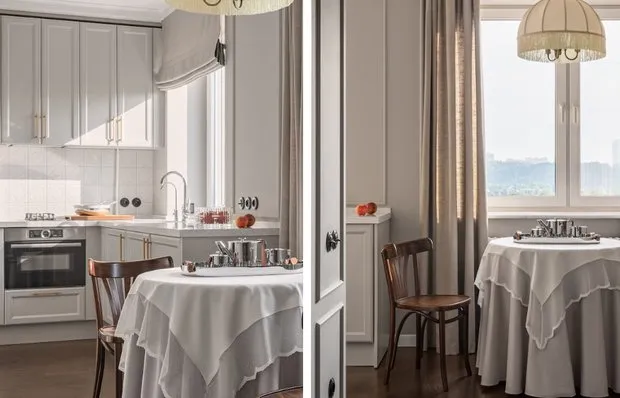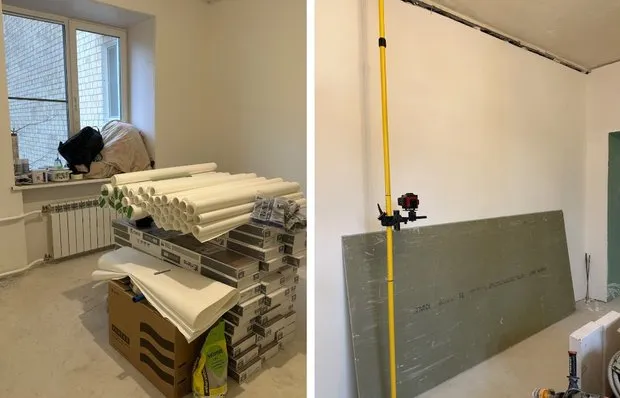There can be your advertisement
300x150
Micro-Remodeling: 15 Ways to Refresh Your Interior Over the Weekend Without Major Expenses
Don't be afraid to experiment and trust your taste!
Updating your home space doesn't always require a large-scale renovation or significant investment. Sometimes, it's enough to make a few targeted changes to transform the look of your interior. Here are 15 ideas that will help you refresh your home decor in just a couple of weekend days.
Quick Solutions for Visual Changes
Repositioning Furniture. Changing the layout of interior items can completely transform how a space is perceived. Try moving the sofa to another wall or turning the bed around. Experiment with placement: perhaps a coffee table looks better not in front of the sofa but to the side. Don't forget functionality — make sure it's still easy to move around after rearranging. Use special furniture sliders to avoid damaging the floor during relocation.
Updating Textiles. New cushion covers, a throw blanket, or curtains can instantly change the look of a room. Choose fabrics that contrast with the main color palette to create accents. For example, if you have a neutral interior, add bright cushions or a throw blanket. Don't be afraid to mix different textures: velvet, linen, cotton — all of these create an interesting play of textures. Pay attention to seasonality: use light fabrics in pastel shades in summer, and heavier, warmer tones in winter.
Mirror Surfaces. Thoughtfully placed mirrors visually expand space and add light. A large mirror opposite a window or a composition of several small mirrors can become a key element in the updated interior. Try unusual shapes: round, oval, or polygonal mirrors can add interest to your design. Pay attention to frames — they can become a standalone decorative element.
Working with Color and Light
Accent Wall. Painting one wall in a bold color or applying wallpaper with an interesting pattern is a simple way to add character to the room. Choose a color that harmonizes with the rest of the interior but creates contrast. If you're not ready for drastic changes, consider temporary wallpaper or fabric panels. These are easy to install and remove without damaging the wall surface.
Lighting. Playing with lighting can significantly change the atmosphere. Add several light sources at different levels: a floor lamp, table lamp, or string lights. Use bulbs of varying color temperatures to create the desired mood. LED strips hidden behind a cornice or under furniture can create the effect of floating light in the air. Don't forget about dimmers — they allow you to adjust the intensity of lighting depending on time of day and your needs.
Vinyl Stickers. A temporary solution for those not ready to make radical changes. Stickers are easy to apply and remove without damaging the surface. Choose designs that match your style: from minimalist geometric forms to complex artistic compositions. Stickers can be used not only on walls but also on furniture, doors, or even household appliances. This is an excellent way to personalize your space without major costs.
Natural Elements in Interior Design
Indoor Plants. Living greenery not only cleans the air but also adds warmth. Start with low-maintenance varieties if you're new to plant care. Sansevieria, Zamiokulkas, or Ficus elastica are great for beginners. Experiment with placement: use hanging planters, wall shelves, or floor stands. Group plants of varying heights and shapes to create a mini-garden inside the room.
Miniature Terrariums. Miniature gardens in glass containers are a modern trend that's easy to implement yourself. Choose a transparent container of any shape, fill it with suitable soil, and plant small plants. Succulents, mosses, and small ferns are perfect for terrariums. Add decorative elements: pebbles, tiny figures, or colored sand to create a unique composition.
Functional Decor
Storage Organization. Stylish containers, woven baskets, or open shelves can help tidy up and become part of the interior. Choose storage systems that blend with the overall style of the room. Transparent containers allow easy access to items, while fabric boxes add warmth. Use vertical space: wall-mounted organizers or tall cabinets can help maximize the area.
Multi-functional Items. Furniture combining decorative and practical functions, such as a stylish note board or an unusual coat hanger. Consider a pouf with storage space or a coffee table with sliding drawers. These items not only save space but also add functionality to the interior. Pay attention to transformable furniture: fold-down tables or sofa beds are ideal for small spaces.

Design: Alla Lyadova
Creative Approach to Refreshing
Upcycling. Give old items a new life. A vintage suitcase can become an original coffee table, and an old staircase can be a unique shelf. Paint an old dresser in a bold color or refresh the upholstery of a chair. This approach not only saves budget but also allows you to create unique interior pieces. Experiment with materials and techniques: decoupage, painting, or reupholstering can completely transform familiar items.
Photo Gallery. Create a composition from photographs or paintings. This not only decorates the wall but also adds individuality to the interior. Choose a unified frame style or, on the contrary, mix different styles for an eclectic look. Arrange photos symmetrically or freely — the most important thing is that the composition looks harmonious. Don't forget about lighting: spotlights can highlight individual elements of the gallery.
Atmospheric Touches
Aromatherapy. A new scent in the home can change the atmosphere just as effectively as rearranging furniture. Choose candles or an aromadiffuser with your favorite fragrance. Consider seasonal preferences: citrus scents in summer, warm spicy notes in winter. Experiment with natural aromas: a bouquet of dried herbs or orange peels can fill the home with a pleasant scent.
Seasonal Decor. Small changes in line with the seasons can help refresh your interior regularly without major expenses. Use bright accents and light fabrics in summer, warm tones and cozy throws in autumn, festive garlands and candles in winter, and fresh flowers and pastel shades in spring. Create a collection of seasonal accessories that you can change every three months.
Texture Play. Add different textures to your interior. Combining smooth and rough, soft and hard creates an interesting visual and tactile effect. Mix leather and wood, metal and textiles, glass and stone. Use textured wallpapers or decorative stucco to create accent surfaces. Don't forget about small details: texture cushions, knitted throws, or ceramic vases can add depth and character to the interior.
Remember that updating your interior is a creative process. Don't be afraid to experiment and trust your taste. Even small changes can significantly transform your living space, making it cozier and more reflective of your personality.
Cover: Design project by Alena Zhivkova
More articles:
 5 Small but Very Beautiful Bathrooms
5 Small but Very Beautiful Bathrooms Most Unexpected Bathroom Solutions: 8 Bright Examples
Most Unexpected Bathroom Solutions: 8 Bright Examples How to Style a Bright Micro-Kitchen in a 32 sq m Studio Apartment
How to Style a Bright Micro-Kitchen in a 32 sq m Studio Apartment Tiny Bathroom 4 sq.m. with Everything Included
Tiny Bathroom 4 sq.m. with Everything Included How They Designed a Small but Very Stylish Kitchen in a Stalin-era Apartment
How They Designed a Small but Very Stylish Kitchen in a Stalin-era Apartment Warm Family Home: How Designer Decorated an Atmospheric Entrance Hall
Warm Family Home: How Designer Decorated an Atmospheric Entrance Hall Flawless Finishing Touches: 7 Key Points for Final Renovation Stage
Flawless Finishing Touches: 7 Key Points for Final Renovation Stage Thoughtful to the Centimeter: 5 Engineering Solutions That Will Save Your Nerves
Thoughtful to the Centimeter: 5 Engineering Solutions That Will Save Your Nerves